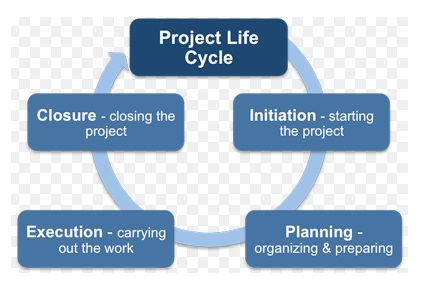Free Sample
Systems engineering report
Solution.pdfExecutive Summary
System science and engineering are completely based on the construction management process of a high level of construction system. This system is not a simple project management system because it involves various technical implementations over the whole process. A concrete gravity dam construction system involves various methods which are discussed in the above report. Dam construction requires proper system science and engineering process which helps to build a proper and technology-based construction system for the corresponding process. Conceptual design is one of the most important sections for a construction management system. This report analyses different steps of constructing concrete gravity dam. Evaluation process of the corresponding project and alignment with the methods of conceptual design is discussed properly.
Table of Contents
Introduction:
System engineering is a planning process of a large project management system. This system can help to develop a large project in a proper way. Dam construction requires proper system science and engineering process which helps to build a proper and technology-based construction system for the corresponding process. Conceptual design is one of the most important sections for a construction management system. This particular designing method helps to gather various requirements for a particular project management system. In this digitally paced era, every construction management system needs to have a technical touch for their corresponding construction management system which helps to build an effective construction. This report discusses a dam construction process through a project life cycle. A project life cycle helps to run a project in an organized manner.
Findings and Analysis
Needs Definition:
Construction of a concrete gravity dam required a huge planning system which is completely related to the system engineering process. A concrete gravity dam is of triangular in size. The top crest of the dam will be widened for providing a roadway. The depth of a dam is very important for a concrete gravity dam. Increasing width of the dam section for the base is completely logical. This happens because of the increasing water pressure. The water pressure of this type of dam increases linearly with proper depth (Modarres 2016). Excess flood water is one of the important factors for these types of dam. An appropriate system related to the spillway is required for the flood water. This spillway system helps to release excess flood water during monsoon [Refer to appendix 1].
The excess flood water is glided over the dam crest following the downstream section for the spillway. This particular downstream system meets with a special type of dissipating structure which helps in killing the energy of the following water completely. The killing [process of the energy system is highly required for dam construction system. This helps to mitigate the chance s of erosion in the river bed for downstream action. According to Wasson (2015), the spillway system is always provided with the gate of the corresponding dam. Typical spillway system for a concrete dam has consisted of a radial gate. The guide wall is also required for the typical construction system. This guide wall is sometimes termed a training wall. The working principle of the training wall is based on the flow crossing prevention system over one bay. In the practical dam system under the spillway, the width of the gate is very important. System science of the dam construction system needs to give an overlook in another section of the construction process. There is another upstream face section includes in the dam system. Both overflowing, as well as non-overflowing sections related to the upstream face of the gravity dam, are placed in the same plane.
Instrumentation process is very important for a concrete gravity dam construction system. The structural health of a dam is the main concern for the system engineer (entura.com.au, 2018). The instrumentation process is classified into two parts namely optional and obligatory. Bureau of Indian Standard code is a special coding system who defined these special types for the dam construction process. Obligatory measurements for dam construction system are the exact needs for a system engineer. Optional measurements are required for some time in the other section of the construction process. Construction of a concrete gravity dam always required uplift pressure in the base of the corresponding dam. This pressure needs another transverse section which helps the uplift pressure in a specific manner. The temperature of the dam is one of the main concern and measurement processes of a dam. Interior section of a dam is needed to be focused as this portion of the dam deals with high temperature. Displacement measurements are also needed in a very small structure system for proper construction system of the dam. Optional measurements are taken for special atmosphere of a dam construction project. Strain, stress, seismicity of the area and pore pressure is four main measurements which are optional for dam construction system. It has been observed that the measurements which are previously taken as optional, they are now taken as an obligatory measurement for dam construction system.
Conceptual Design:
Conceptual design of a project management system is nothing but a project life cycle [Refer to appendix 2]. This project life cycle is organized for proper planning of a large project. As stated by Long (2018), this project life cycle phase includes various steps related to a project management system. Conceptual design is mainly constructed for the proper analysation methods of a large construction managements system. Step by step methods helps the system engineers to implement the process properly. Generally, a project management system is started with feasibility analysis for the related project and ends with proper maintenance process of that particular project. Problem definition along with the need definition is important for a conceptual system design of a system engineering process. Advanced planning of the proper system is very important for a construction management system. In the context of the concrete gravity dam construction process, advanced system planning is completely related to the special technical implementation. In this digitally paced era, every construction engineering system follows highly advanced technology for their corresponding construction process. Concrete gravity dam construction system needs advance planning methodology as these types of dams’ deals with huge water resources. Feasibility analysis is the first and foremost criteria of a project management system. Katina et al. (2014) opined that feasibility analysis helps to gather proper requirements related to the project and observes whether all the requirements are ready to be processed or not. As the dam construction system is totally related to the system engineering process, operational requirements for the corresponding system is also needed for the construction system. Providence of maintenance along with support after the finishing of a construction is required. Technical measures for performance management are very important for system engineering process. In the context of dam construction, it is very important for the system engineer to develop a technical team for assisting the project. Recent situations regarding the concrete gravity dam require high-class technical support from the engineers. Functional allocation along with analysis is one of the main factors for the conceptual designing process. This is a special type of top-down process for translating different types of requirements related to the system level. There is a gap between constraints and high-level set related to the system requirements. This gap requires a bridging system which is fulfilled by both of the functional allocation and functional analysis process.
According to Poff et al. (2016), the decision-making process is one of the core requirements for the conceptual design process of a construction management system. Tradeoff studies are basically special types of critical tool for information providence system. This decision-making process is typically needed for program managers and system managers related to a construction management system. Tradeoff analysis helps the system engineers to relate with the needs of the construction. Concrete gravity dam construction process needs a proper tradeoff analysis which will help the system engineers to look over every aspect of the decision-making process related to the construction system. System requirement specification is the last step for a conceptual designing system for a construction management system. Documented information for overall construction management system is needed because it helps to analyze the system requirements for the whole construction or the project management system. System specification is the documentation process of all the system requirements for the corresponding construction project. Sometimes, the system specification is also called system requirements specification system. Concrete gravity dam needs various kinds of system pieces of equipment. Obligatory and optional measurements are also required which are also the part of system specification criteria.
Evaluation:
Geological inspection is highly needed before starting a dam construction project (Jiang et al. 2015). It is very important to visit the proper site and making a complete inspection of the construction system. Dam is of various types. Two main types of dams are embankment dams and concrete dams. Both the dams required the de-water process for the geological inspection system. Foundation process of the dam is started by a preliminary construction which is included in the feasibility studies. Foundation improvement is also required for dam construction project. The first stage for construction of a dam requires foundation improvement. This process requires a temporary diversion of the river which is the first and foremost criteria of a dam construction system. Diversion of a river is not a very simple process. As explained by Fernandez and Pallis (2014), this particular diversion process needs a huge amount of money along with great geological techniques. This process depends upon the method, magnitude, and cost required for the corresponding process. De-water procedures also depend upon various circumstances like a cross-section of the corresponding valley, the dam type and hydrological conditions of the river. Bed material is one of the main components of a river which needs to be measured in a proper way. Consequences of failure always need to be measured for the de-water system. In the context of a concrete dam construction system, diversion of the river is highly required in the very first phase of the corresponding construction system.
First stage concreting is done by the sluice openings of the concrete dams (Bianchi et al. 2015). Spillway system is always provided with the gate of the corresponding dam. Typical spillway system for a concrete dam consists of a radial gate. The guide wall is also required for the typical construction system. This guide wall is sometimes termed as a training wall. The second stage of the construction process of dams involves stage outlets system. It has been observed that if the outlet of the second stage is too small for the purpose of the flood, both the stages are submerged after completing the whole work. The working principle of the training wall is based on the flow crossing prevention system over one bay. Sometimes, proper diversion method is not possible for dam construction system. It has also been observed that due to some topographical considerations, the diversion system is not possible for some cases. In this case, the diversion process is implemented by the excavated channelling system (nptel.ac.in, 2018). Diversion process includes various channels namely multiple stages and single stage diversion scheme. In the practical dam system under the spillway, the width of the gate is very important. System science of the dam construction system needs to give a overlook in another section of the construction process. There is another upstream face section includes in the dam system. As stated by Brown (2015), both overflowing as well as non-overflowing sections related to the upstream face of the gravity dam are placed in same plane. Preparation for foundation process of a construction of dam is very important for preliminary stages of the construction.
Conclusion:
Construction management is a part of large project management system. System science and engineering are completely based on the construction management process of a high level of construction system. This system is not a simple project management system because it involves various technical implementations over the whole process. A concrete gravity dam construction system involves various methods which are discussed in the above report. It has been observed that a concrete gravity dam requires various technical implementation which helps to complete the total process in a great manner. The above report discusses the proper needs for constructing a concrete gravity dam. Different needs along with feasibility analysis for the construction and whole conceptual design with proper evaluation for the construction process is discussed in the following report. Conceptual design methods are one of the most important sections of a construction management system. This section helps to gather information about the construction system. Different system implementation process related to the technical advancement is needed for this designing phase. This report discusses all the possible steps of a conceptual designing method with proper illustration.
References:
Books:
Modarres, M., 2016. Risk analysis in engineering: techniques, tools, and trends. CRC press.
Wasson, C.S., 2015. System engineering analysis, design, and development: Concepts, principles, and practices. John Wiley & Sons.
Journals:
Fernandez, F. and Pallis, G.C., 2014, November. Opportunities and challenges of the Internet of Things for healthcare: Systems engineering perspective. In Wireless Mobile Communication and Healthcare (Mobihealth), 2014 EAI 4th International Conference on (pp. 263-266). IEEE.
Jiang, H., Lin, P., Qiang, M. and Fan, Q., 2015. A labor consumption measurement system based on real-time tracking technology for dam construction site. Automation in Construction, 52, pp.1-15.
Katina, P.F., Keating, C.B. and Ra’ed, M.J., 2014. System requirements engineering in complex situations. Requirements engineering, 19(1), pp.45-62.
Long, J.E., 2018. Relationships between common graphical representations used in system engineering. INSIGHT, 21(1), pp.8-11.
Poff, N.L., Brown, C.M., Grantham, T.E., Matthews, J.H., Palmer, M.A., Spence, C.M., Wilby, R.L., Haasnoot, M., Mendoza, G.F., Dominique, K.C. and Baeza, A., 2016. Sustainable water management under future uncertainty with eco-engineering decision scaling. Nature Climate Change, 6(1), p.25.
Online Articles:
Bianchi, T.S., Galy, V., Rosenheim, B.E., Shields, M., Cui, X. and Van Metre, P., 2015. Paleoreconstruction of organic carbon inputs to an oxbow lake in the Mississippi River watershed: Effects of dam construction and land use change on regional inputs. Geophysical Research Letters, 42(19), pp.7983-7991. [Online] Available at: https://agupubs.onlinelibrary.wiley.com/doi/full/10.1002/2015GL065595 [Accessed on: 2nd August, 2018]
Brown, E.T., 2015. Rock engineering design of post-tensioned anchors for dams–A review. Journal of Rock Mechanics and Geotechnical Engineering, 7(1), pp.1-13. [Online] Available at: https://www.sciencedirect.com/science/article/pii/S1674775514000730 [Accessed on : 2nd August, 2018]
Websites:
entura.com.au, 2018 entura 2nd August, 2018 Available at: http://www.entura.com.au/water/dams/design-and-construction/
nptel.ac.in, 2018 Design and Construction of Concrete Gravity Dams 2nd August, 2018 Available at: https://nptel.ac.in/courses/105105110/pdf/m4l06.pdf
Appendices:
Appendix 1: Overflow section of the Dam
(Source: Jiang et al. 2015)
Appendix 2: Project Life Cycle


(Source: Brown 2015)

Get Assignment Help Now...!
Subjects We Offer
- Engineering Assignment Help
- MATLAB Assignment Help
- Mechanical Engineering Assignment Help
- Civil Engineering Assignment Help
- Computer Science Assignment Help
- Electrical Engineering Assignment Help
- Electronics Assignment Help
- Economics Assignment Help
- Management Assignment Help
- Do My Assignment
- Cheap Assignment Help
- Programming Assignment Help
- Law Assignment Help
- Assignment Provider
- Finance Assignment Help
- Python Assignment help
- Healthcare Management Assignment Help
- Computer Network Assignment Help
- History Assignment Help
- Industrial Engineering Homework Help
- IT Management Assignment Help
- Nursing Assignment Help
- Operating System Assignment Help
- Statistics Assignment Help
- Material Science Assignment Help
- Mechanical Engineering Homework Help
- University Assignment Help
- Agriculture Engineering Homework Help
- ATHE Courses Assignment Help
- Capital Budgeting Assignment Help
- BTEC Assignment Help
- HND Assignment Help
- Material Science Assignment Help
- Psychology Assignment Help
- Resit Assignment Help
- Computer Architecture Assignment Help
- Data Structure Assignment Help
- Database Assignment Help
- PHP Assignment Help





 +61-4-8002-4016
+61-4-8002-4016
 Australia
Australia  Brazil
Brazil  Canada
Canada  Hongkong
Hongkong  India
India  Ireland
Ireland  Jorden
Jorden  Kuwait
Kuwait  Malaysia
Malaysia  New Zealand
New Zealand  UAE
UAE  USA
USA  UK
UK  Qatar
Qatar  Saudi Arabia
Saudi Arabia  Singapore
Singapore  Taiwan
Taiwan  South Africa
South Africa 
